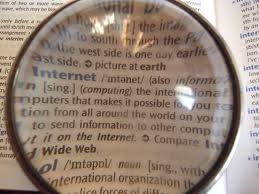
Throughout my childhood and teenage years, my nickname was “bookworm.”
I devoured books. It seemed.
Every Friday, after her weekly shopping, my mom would go to the Christian bookstore and buy me a book. I read this, in addition to the ones I borrowed from the library.
Oh the dreams I had… the places I went… the people I met.
But I had one problem.
When I read, sometimes I skipped lines and would have to reread sentences and even paragraphs to grasp the meaning of the text.
In my work of helping my daughter and others who learn differently, I discovered that my difficulty was in the area of visual sequencing.
This brings us to the 3rd visual processing skill this week.
So far, we have looked at visual discrimination and visual figure-ground discrimination.
Visual sequencing is the ability to see and distinguish symbols, words and objects in a particular sequential order.
This skill is vital for spelling.
You may be wondering how to find out if your child is having visual sequencing trouble.
Here are a few pointers:
- She has difficulty staying in her place while reading. For example, she skips lines, reads the same line over and over.
- He struggles to arrange pictures of events in the order in which they are presented.
- She has trouble copying the alphabet or numbers in the same order given. For example, she may omit, add, or transpose what is on her desk or chalk/white board.
- He has difficulty seeing the order of letters in words. For example, misreading letters in words.
- You may hear her whispering or talking aloud while writing.
A couple ways you can help develop a better connection between the brain and the eyes when sequencing are by:
- Using color coding with written materials.
- Combining reading with oral presentation.
As with computers, the quality of the input (through the eyes) determines the integrity of the output (from the brain).
A visual sequencing problem is not a life sentence. It can be fixed. But it requires commitment, dedication and perseverance.
Have you noticed any difficulties in this area in your child?

All my childern are under the age of 3 so none read…yet. However this is great info to keep in mind when they start school in the fall 🙂
Great to be of help, Dayana. Hats off to you as you train your little ones. Thanks for stopping by.
I’m like you– I immerse myself in books. Thanks for posting! 🙂
You are welcome, Hillary. It’s always wonderful to meet kindred spirits.
Knowledge is good, but applying it is a powerful thing. Keep on reading.